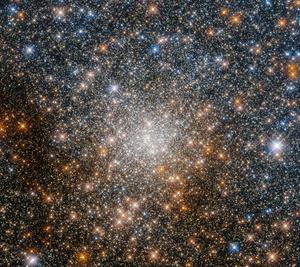Glossary term: Star Cluster
Description: Star clusters are groups of stars where all the constituent stars are located in the same area of the sky, with similar distance to us, similar chemical composition, and motion, and are often approximately the same age. The stars in the cluster are likely to have been formed from the same parent cloud of gas. The density distribution could either be centrally concentrated and spherical, or have more complex shapes. They are broadly categorized into two types: Open star clusters and globular clusters. Open clusters are younger (few million years to about 4–5 billion years), have memberships of hundreds to thousands of stars, and could have associated gas and dust remnants from the parent cloud. In the Milky Way, open clusters are typically found in the galactic disk. Globular clusters are among the oldest entities with most being more than 10 billion years old. They are centrally concentrated, spherical shaped clusters containing thousands to millions of stars. In the Milky Way, globular clusters are typically found in the galactic halo.
Related Terms:
See this term in other languages
Term and definition status: This term and its definition have been approved by a research astronomer and a teacher
The OAE Multilingual Glossary is a project of the IAU Office of Astronomy for Education (OAE) in collaboration with the IAU Office of Astronomy Outreach (OAO). The terms and definitions were chosen, written and reviewed by a collective effort from the OAE, the OAE Centers and Nodes, the OAE National Astronomy Education Coordinators (NAECs) and other volunteers. You can find a full list of credits here. All glossary terms and their definitions are released under a Creative Commons CC BY-4.0 license and should be credited to "IAU OAE".
If you notice a factual error in this glossary definition then please get in touch.
Related Media
Stars in globular clusters near the heart of the Milky Way
Credit: ESA/Hubble & NASA, R. Cohen credit link
License: PD Public Domain icons









